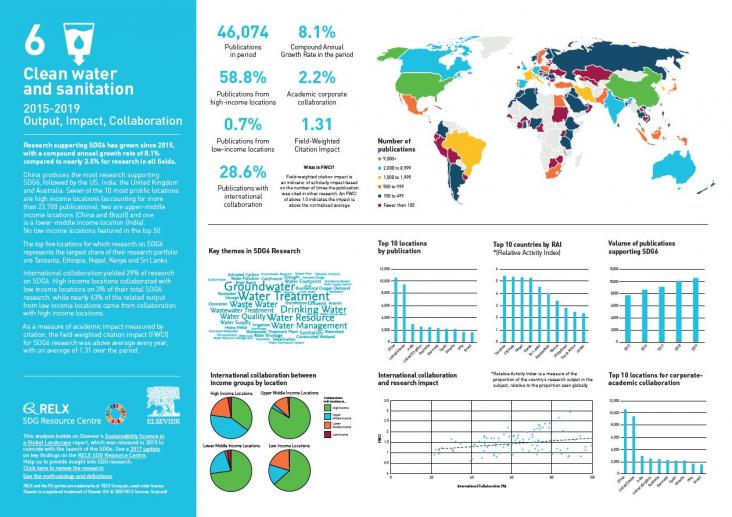
Urbanisation is increasing in many countries, leading to the establishment of 33 megacities, representing huge water demand which is increasingly difficult to supply, exemplified by the recently av
Elsevier,
Aquananotechnology: Applications of Nanomaterials for Water Purification, 2021, Pages xv-xxiv
This book chapter advances SDG 6 and 14 by introducing and summarizing efforts of nanomaterials research for environmental remediation--focusing on water purification

By mapping the state of research within each SDG area, this report acknowledges the pivotal role research plays in tackling some of the world’s greatest challenges. It aims to better understand the research community’s global sustainable development efforts and assesses the progress made, as well as unmet research needs.

Over the past five years, we have used data and analytics to help the research and healthcare communities navigate the sea of research and to put collaboration, both interdisciplinary and international, at the heart of scientific progress on the SDGs. View findings for SDG 6.

Over the past five years, we have used data and analytics to help the research and healthcare communities navigate the sea of research and to put collaboration, both interdisciplinary and internati
Data in 2016 and 2017 has shown that most of Malaysia's river water quality was in Water Quality Index Class II and Class III.
This review goal is to reflect on the challenges and prospects for water quality in the face of the pandemic caused by the new SARS-CoV-2 coronavirus (COVID-19).

Water pollution is one of the serious threats in the society. More than 8 million tons of plastic are dumped in the oceans each year.
This special issue explores the influence that insects and other invertebrates have on ecosystem services and the Sustainable Development Goals (SDGs), and makes a case for insect science to promote a sustainability science approach.

